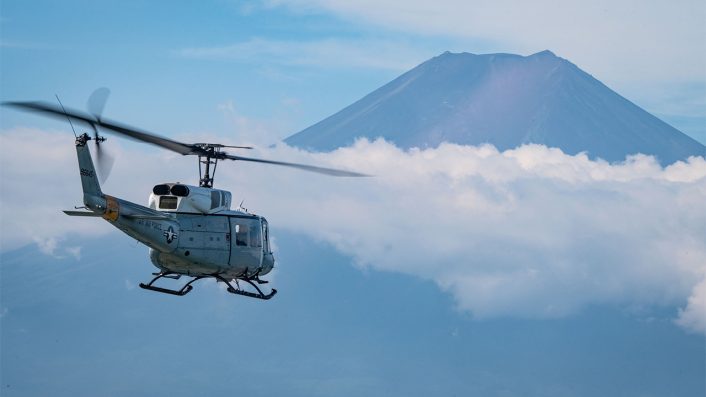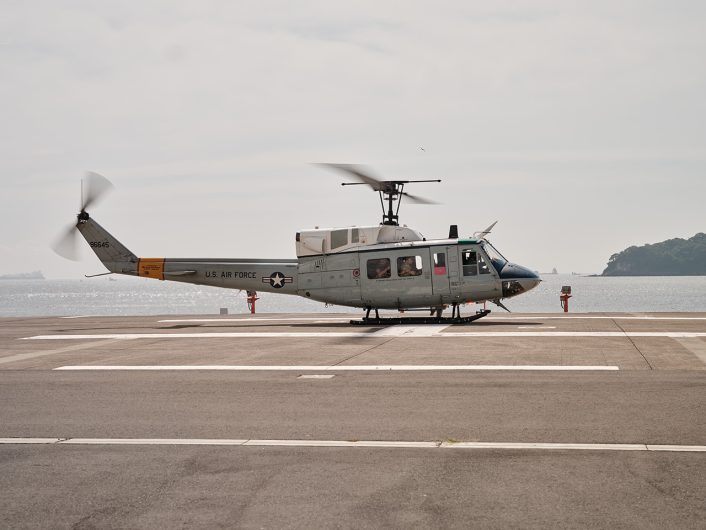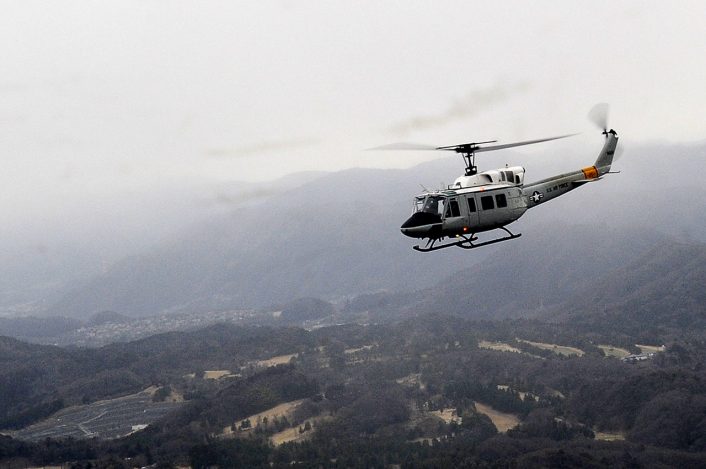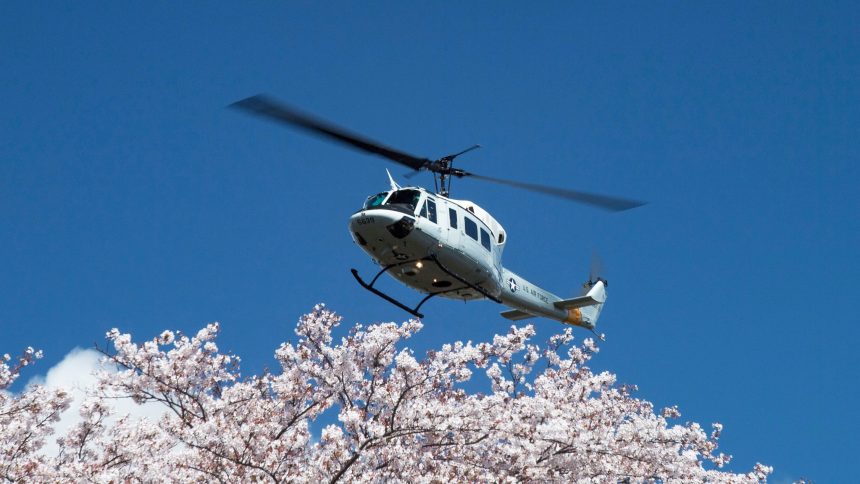After over 50 years of continuous service with the U.S. Air Force at Yokota Air Base, Tokyo, the 459th Airlift Squadron has now flown the type’s final missions over the Japanese capital.
The 459th Airlift Squadron, part of Yokota’s 374th Airlift Wing, carries out a range of utility taskings in the region including passenger, light cargo and VIP airlift, medical evacuations, and search and rescue. The squadron has been equipped with a fleet of C-12J Huron fixed wing aircraft and UH-1N Huey helicopters for the mission, but their venerable and iconic Huey helicopters will now bow out of official service in September.

In late August, the squadron completed a traditional ‘fini-flight’ to say farewell to the base and to Tokyo, intended to be the Huey’s last mission before officially being withdrawn. The first Hueys to arrive at Yokota were single-engine UH-1P variants in 1971. These were later replaced by the newer, twin engine UH-1N ‘Twin Huey’ from 1980. A limited number of UH-1Ns remain in wider service across the U.S. military, and many more are active worldwide. The last frontline ‘battlefield helicopter’ UH-1N was retired from the U.S. Marine Corps in 2014, replaced by the new-build UH-1Y Venom derivative.
No direct replacement for Yokota’s Hueys has been announced, leaving a significant gap in the squadron’s capabilities. Without a rotary wing aircraft, the 459th would be much less able to accommodate many shorter-range airlift sorties which might involve operating from locations without a runway. The UH-1Ns were active in this role even earlier in August, flying the deputy commander of U.S. Forces Japan for a visit to the U.S. naval base at Yokosuka.

The UH-1Ns operated by the U.S. Air Force in support of its Minuteman III intercontinental ballistic missile silo fields are being replaced by MH-139 Grey Wolf helicopters, based on the Leonardo AW139. However, the final amount of these helicopters due to enter service remains somewhat flexible, with many suggestions that the service is never likely to operate its stated requirement of 84 airframes. This leaves little room for smaller operators, like the 459th, to tag along with the order and replace their aircraft at the same time. Other than a variant of the UH-60, which would likely increase operating costs, there are very few alternatives currently in U.S. service.
One option to maintain the capability could be to contract the non-frontline role to a private operator, similar to the U.S. Navy’s contracted force of Super Puma resupply helicopters. However, it would likely take some time to open bids for, draw up, and sign such a contract, if one isn’t already in the works.
The last dance🕺
Members of the 459th AS visited the Japan Air Self-Defense Force’s Niigata Air Rescue Squadron to commemorate their long-standing partnership and take part in a traditional Niigata dance before the UH-1N Huey is retired from Yokota AB in September. pic.twitter.com/uEkAotDaBL
— Yokota Air Base (@TeamYokota) August 29, 2025
To commemorate the Huey’s service at Yokota, a special decal was applied to one of the Airlift Wing’s C-130J Hercules transports. Reading “SEEEYUH!” and listing the aircraft and its service life at Yokota, it also thanks the aircraft for its service in Japanese.
C-130J 374AW Yokota Air Base / UH-1N Huey 459th AS Farewell decoration. pic.twitter.com/lEG9TXhvMC
— Bee (@bee_beesupercub) August 26, 2025
Airmen apply a decal to the side of a C-130J Super Hercules assigned to the 36th Airlift Squadron in commemoration of the UH-1N Huey’s departure from the 459th Airlift Squadron at Yokota Air Base, Japan, Aug. 14, 2025. (U.S. Air Force photo by Senior Airman Jacob Wood) pic.twitter.com/Fl47XlGP8R
— U.S. Forces Japan (@USForcesJapan) August 20, 2025
A Huey, airframe 69-6614, also flew a final aerial demonstration on Aug. 18, showcasing the search and rescue capabilities that the aircraft have provided for decades with a hoist-lift demo.
2025.05.18 YOKOTA FF25
UH-1N HUEY LAST DEMO
C-130Jと同じく横田の顔として長年フライトしてきた第459空輸中隊のUH-1N
今年で退役ということで最後の展示飛行となりました。
ロービジ塗装が主流となる現在、貴重となハイビジカラーの機体
2パスとホイストデモを披露してくれました。 pic.twitter.com/QrqrhjgmoV
— けん (@kenken__0715) May 27, 2025
The familiar and distinctive sound of the Huey is likely to be missed over the skies of Tokyo. While focused on servicing the needs of the U.S. military, the 459th Airlift Squadron have also been called on to lend support to their host nation in times of need. Most notably, in 2011, both UH-1Ns and C-12s of the 459th flew sorties under Operation Tomodachi after a magnitude 9.0 earthquake and subsequent tsunami struck Japan. With the Fukushima Daiichi Nuclear Power Station heavily damaged, Huey and Huron aircraft flew survey flights and radiation-mapping sorties over nearby areas to help grant a greater overall picture of the disaster.

Huey helicopters were also used to shuttle personnel and equipment from the U.S. military, U.S. Department of Energy, and other officials, to various locations around the region affected by the natural disaster.









